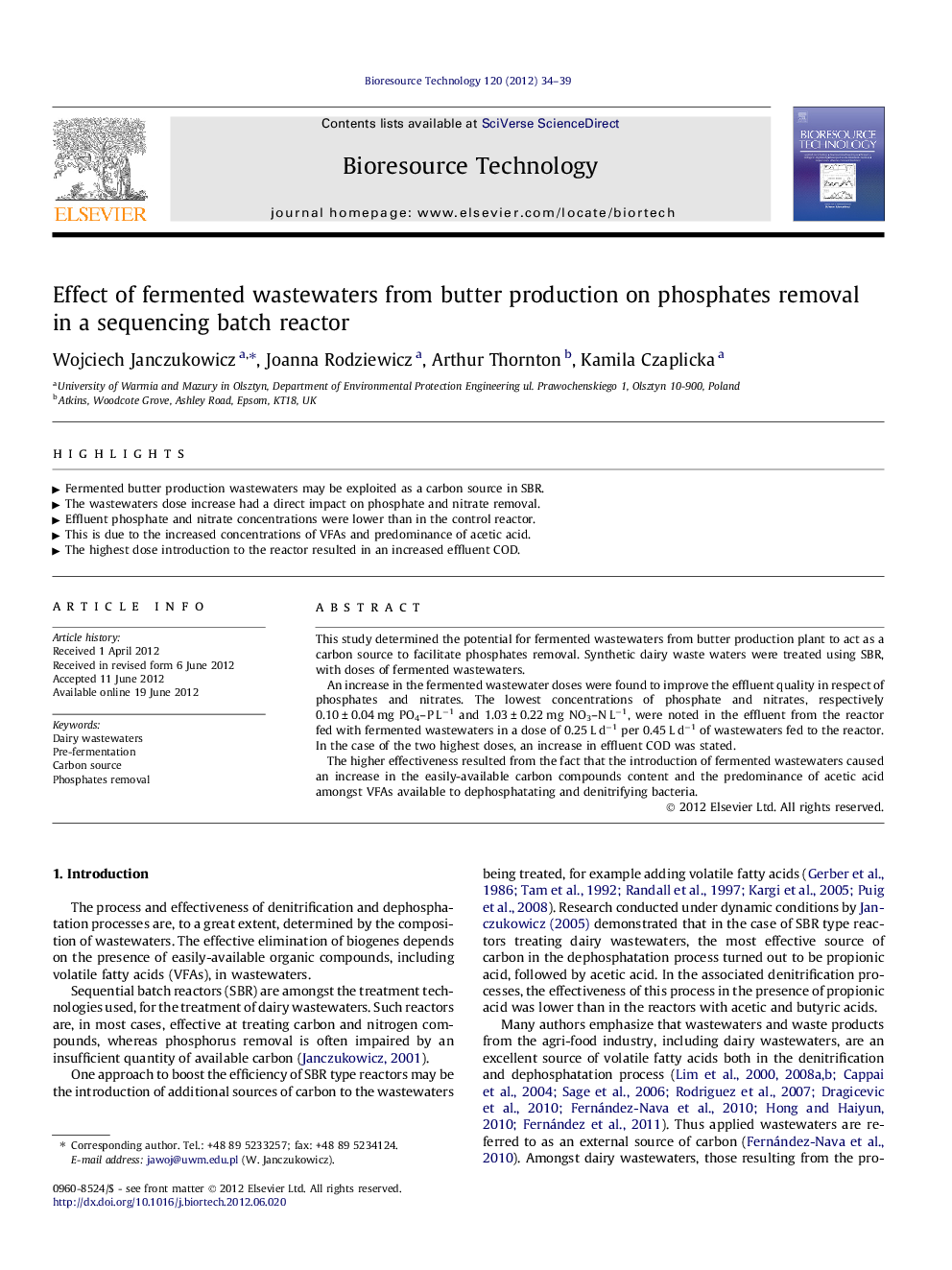| کد مقاله | کد نشریه | سال انتشار | مقاله انگلیسی | نسخه تمام متن |
|---|---|---|---|---|
| 681363 | 1460023 | 2012 | 6 صفحه PDF | دانلود رایگان |

This study determined the potential for fermented wastewaters from butter production plant to act as a carbon source to facilitate phosphates removal. Synthetic dairy wastewaters were treated using SBR, with doses of fermented wastewaters.An increase in the fermented wastewater doses were found to improve the effluent quality in respect of phosphates and nitrates. The lowest concentrations of phosphate and nitrates, respectively 0.10 ± 0.04 mg PO4–P L−1 and 1.03 ± 0.22 mg NO3–N L−1, were noted in the effluent from the reactor fed with fermented wastewaters in a dose of 0.25 L d−1 per 0.45 L d−1 of wastewaters fed to the reactor. In the case of the two highest doses, an increase in effluent COD was stated.The higher effectiveness resulted from the fact that the introduction of fermented wastewaters caused an increase in the easily-available carbon compounds content and the predominance of acetic acid amongst VFAs available to dephosphatating and denitrifying bacteria.
► Fermented butter production wastewaters may be exploited as a carbon source in SBR.
► The wastewaters dose increase had a direct impact on phosphate and nitrate removal.
► Effluent phosphate and nitrate concentrations were lower than in the control reactor.
► This is due to the increased concentrations of VFAs and predominance of acetic acid.
► The highest dose introduction to the reactor resulted in an increased effluent COD.
Journal: Bioresource Technology - Volume 120, September 2012, Pages 34–39